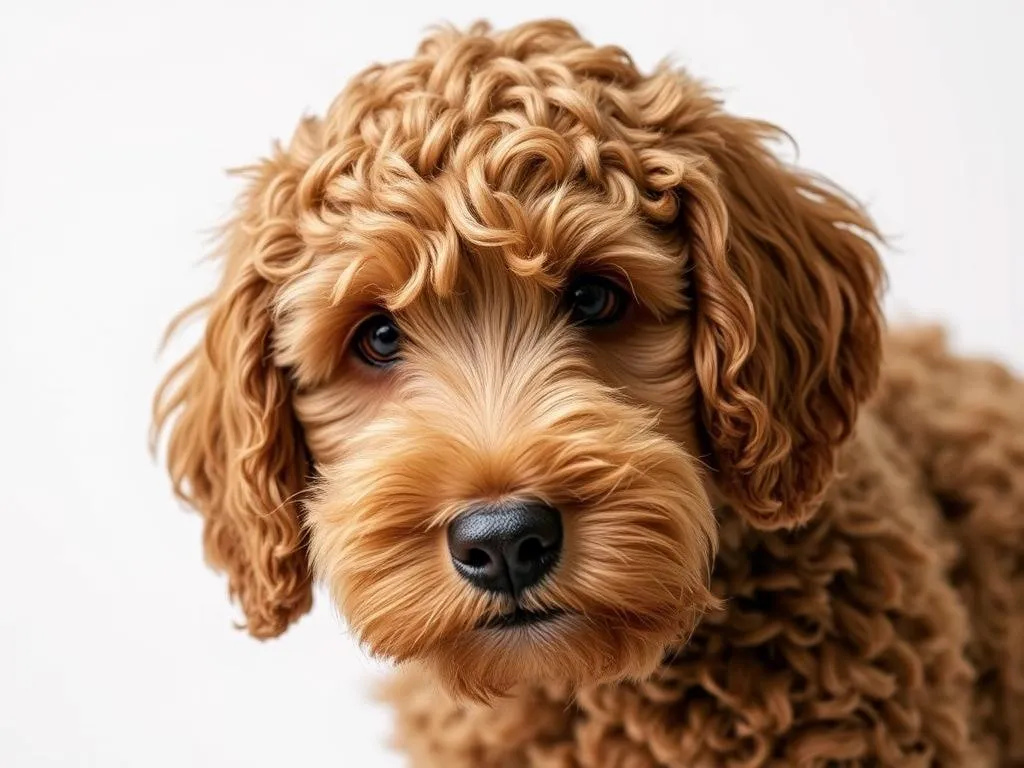
Labradoodles have gained immense popularity in recent years, thanks to their charming personalities and hypoallergenic traits. As a crossbreed of Labrador Retrievers and Poodles, these dogs are often sought after for their friendly demeanor and versatility as family pets or service dogs. However, potential owners frequently wonder, how much do Labradoodles smell? Understanding the grooming and smell characteristics of Labradoodles is crucial for any prospective owner, as it can significantly influence their pet ownership experience.
Understanding Labradoodles
Origin and History
Labradoodles were first bred in Australia in the late 1980s by Wally Conron, who aimed to create a hypoallergenic service dog. By crossing the Labrador Retriever with the Poodle, Conron sought to combine the friendly, outgoing nature of Labradors with the low-shedding coat of Poodles. This unique blend resulted in a dog that not only serves as a great companion but also reduces the likelihood of allergic reactions in sensitive individuals.
Physical Characteristics
Labradoodles come in various sizes—standard, medium, and miniature—depending on their Poodle parentage. Their coat types can vary significantly, ranging from wooly, fleece-like textures to straight fur. Common colors include black, chocolate, cream, and apricot, often with various patterns such as spots or a solid hue. The coat type plays a crucial role in how much they smell, as some textures hold onto odors more than others.
Temperament and Behavior
Known for their friendly and sociable nature, Labradoodles generally get along well with children and other pets. They have a moderate to high activity level, requiring regular exercise and mental stimulation. Their playful attitude and intelligence make them eager to please, which can be beneficial for training. Understanding their temperament is essential for creating a harmonious home environment and fostering good hygiene practices.
Factors Influencing Smell in Labradoodles
Coat Type and Maintenance
The type of coat a Labradoodle has significantly influences their smell. Wooly or fleece coats tend to trap odors more than straight fur, making regular grooming essential. Consistent brushing helps to remove dirt, debris, and loose hair, which can contribute to unpleasant smells. Regular grooming also helps to distribute natural oils throughout the coat, keeping it healthy and less prone to odor.
Diet and Nutrition
A Labradoodle’s diet can also play a critical role in their overall smell. Feeding your dog high-quality, nutritious food can help maintain a healthy skin and coat, which reduces odor. Ingredients that promote skin health, such as omega fatty acids, can make a noticeable difference. Conversely, low-quality or inappropriate diets can lead to skin issues, which may cause increased odor.
Health Issues
Certain health problems can lead to unpleasant smells in Labradoodles. Skin infections, allergies, and ear infections are common issues that can produce strong odors. Regular veterinary check-ups are essential for detecting and addressing these problems early. Keeping an eye on your dog’s overall health can prevent minor issues from becoming significant concerns that affect their smell.
Environmental Factors
The environment in which your Labradoodle lives can also impact their odor. Humid conditions can exacerbate smells, especially if the home is not kept clean. Additionally, outdoor activities can introduce dirt and odors that cling to your dog’s coat. Regular cleaning of living spaces and managing outdoor exposure can help keep your Labradoodle smelling fresh.
Grooming Practices to Minimize Odor
Regular Bathing
Bathing your Labradoodle regularly is one of the most effective ways to manage odor. It is generally recommended to bathe them every 4 to 6 weeks, depending on their activity level and coat type. When bathing, use a gentle, dog-specific shampoo to avoid irritating their skin. Rinse thoroughly to remove all soap residue, as leftover product can contribute to odors.
Brushing Techniques
Regular brushing is crucial for minimizing odor in Labradoodles. Depending on their coat type, you should brush them at least once a week. This practice helps to prevent matting, which can trap dirt and moisture, leading to unpleasant smells. Use a slicker brush or a comb designed for your dog’s specific coat type. The right tools can make a significant difference in maintaining a clean and odor-free coat.
Ear and Teeth Care
Labradoodles are prone to ear infections, especially if they have floppy ears. Regular ear cleaning can prevent wax buildup and odors associated with infections. Use a vet-recommended ear cleaner and cotton balls to gently clean the ears. Additionally, maintaining dental hygiene is essential, as poor oral health can lead to bad breath. Regular brushing and dental chews can help keep your Labradoodle’s mouth fresh.
Comparing Labradoodles with Other Breeds
Labradoodles vs. Standard Poodles
When comparing Labradoodles to Standard Poodles, it’s essential to note that both breeds share a common ancestry. However, Labradoodles tend to have a more varied coat texture, which can influence their smell. Standard Poodles, with their curly coats, may have a lower odor level due to less surface area for dirt and moisture to cling to. Grooming needs also vary; Poodles require regular grooming to maintain their coat, while Labradoodles might need less frequent grooming depending on their coat type.
Labradoodles vs. Labs
When it comes to odor, Labradoodles often fare better than their Labrador Retriever counterparts. Labs are known to have a “doggy” smell due to their short, dense coats and natural oil production. Labradoodles, especially those with fleece or wooly coats, can have less odor, provided they receive regular grooming. However, both breeds require attentive care to manage any potential smells effectively.
Addressing Common Concerns
Myths about Labradoodles and Smell
Many myths surround Labradoodles and their odor. One common misconception is that all Labradoodles are hypoallergenic and will not smell at all. While they tend to shed less than other breeds, individual dogs may still have an odor based on their grooming, health, and environment. Understanding these factors can help dispel the myth and set realistic expectations for new owners.
When to Seek Professional Help
If you notice persistent or strong odors despite regular grooming, it may be time to consult a professional groomer or veterinarian. Signs that indicate a need for professional intervention include excessive scratching, ear shaking, or changes in appetite or behavior. Early intervention can prevent more severe health issues and ensure your Labradoodle remains healthy and odor-free.
Conclusion
Understanding how much Labradoodles smell involves considering various factors, including their coat type, diet, health, and environmental conditions. Regular grooming practices, such as bathing, brushing, and ear care, are crucial in minimizing odor and promoting a healthy lifestyle for your furry friend. While Labradoodles are generally known for being less odorous than some other breeds, responsible pet ownership and care are essential for maintaining their overall well-being. By staying informed and proactive, you can enjoy the companionship of your Labradoodle while effectively managing any potential odors.
Owning a Labradoodle can be a rewarding experience, provided you are committed to their grooming and healthcare needs. With the right approach, you can keep your Labradoodle fresh and happy, ensuring they remain a beloved member of your family for years to come.









